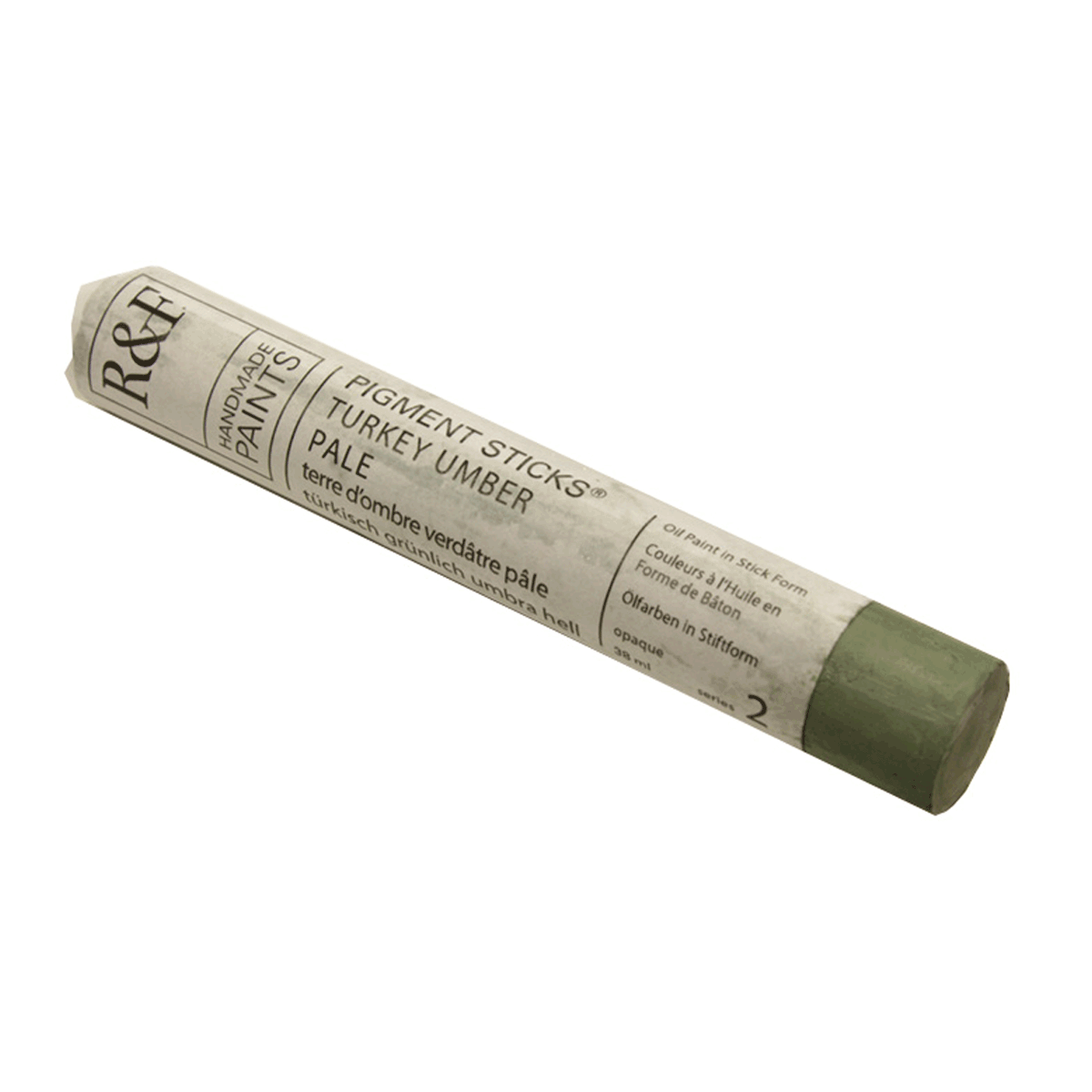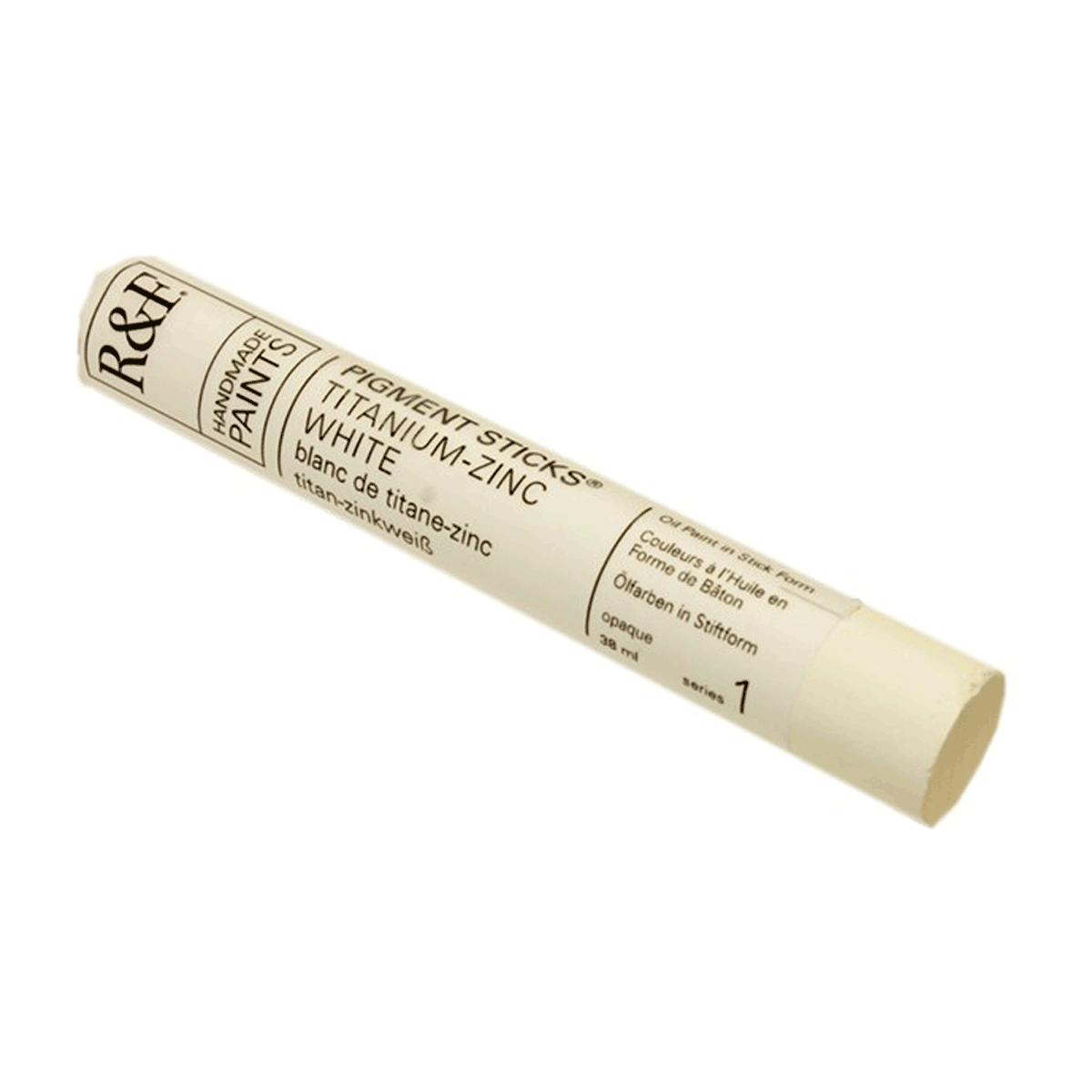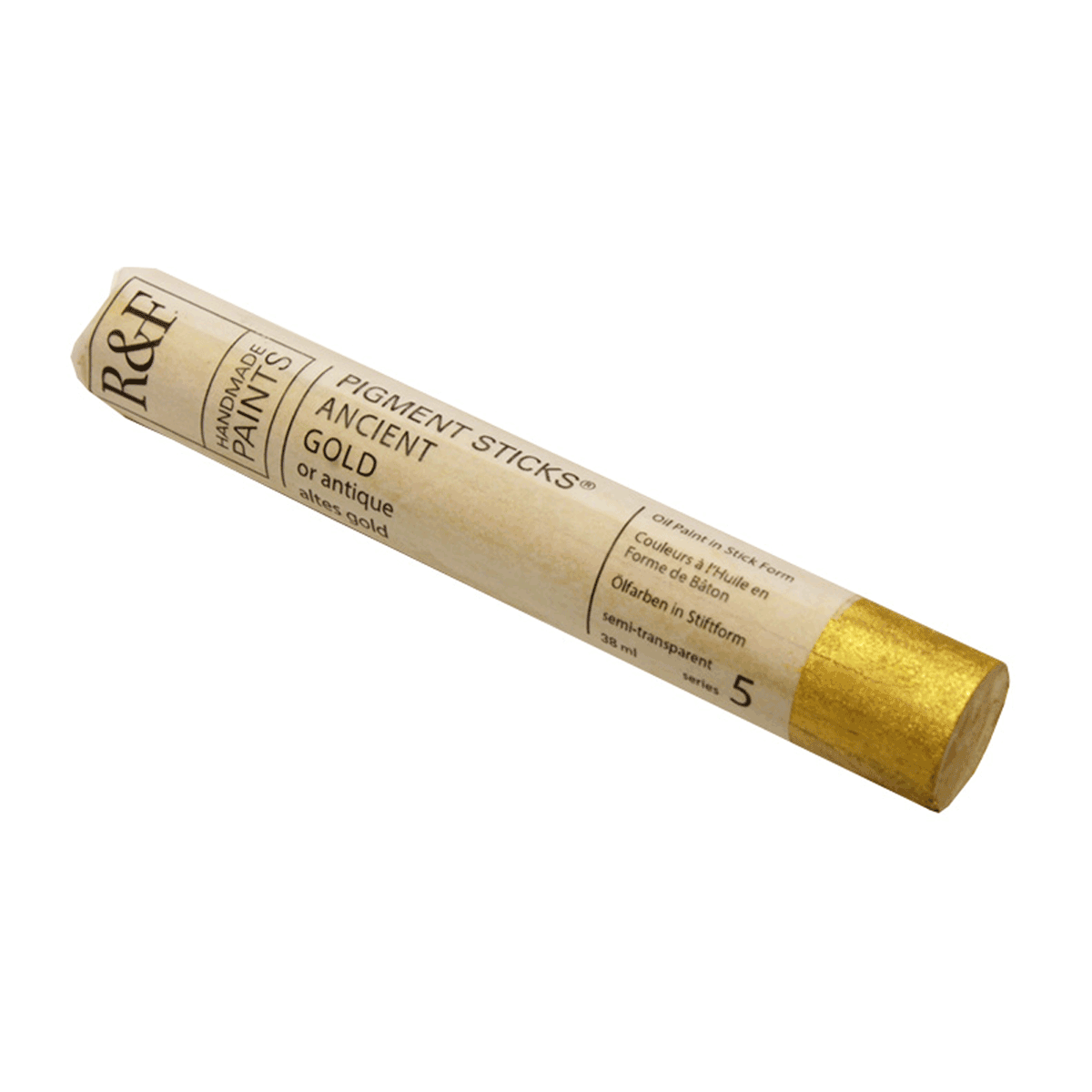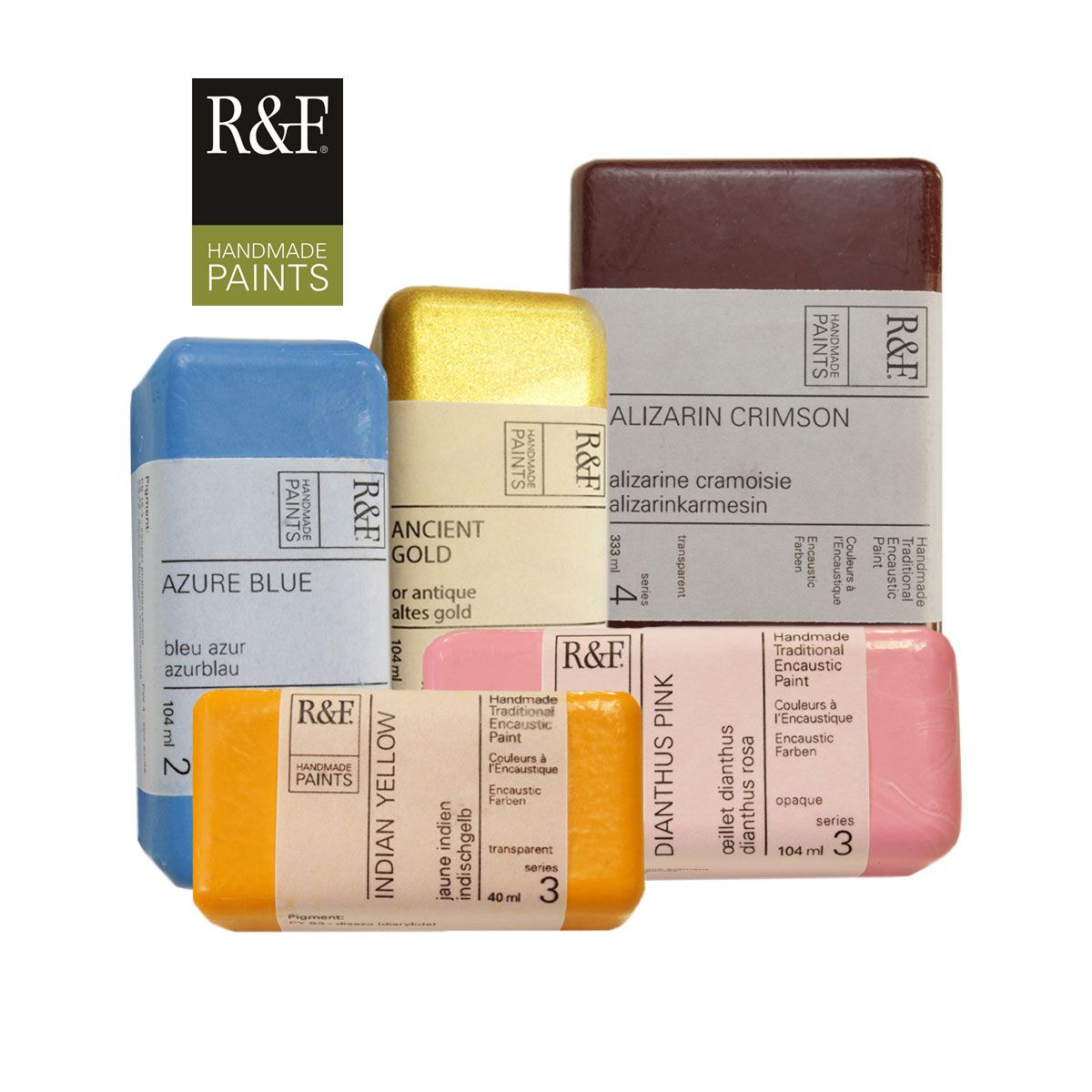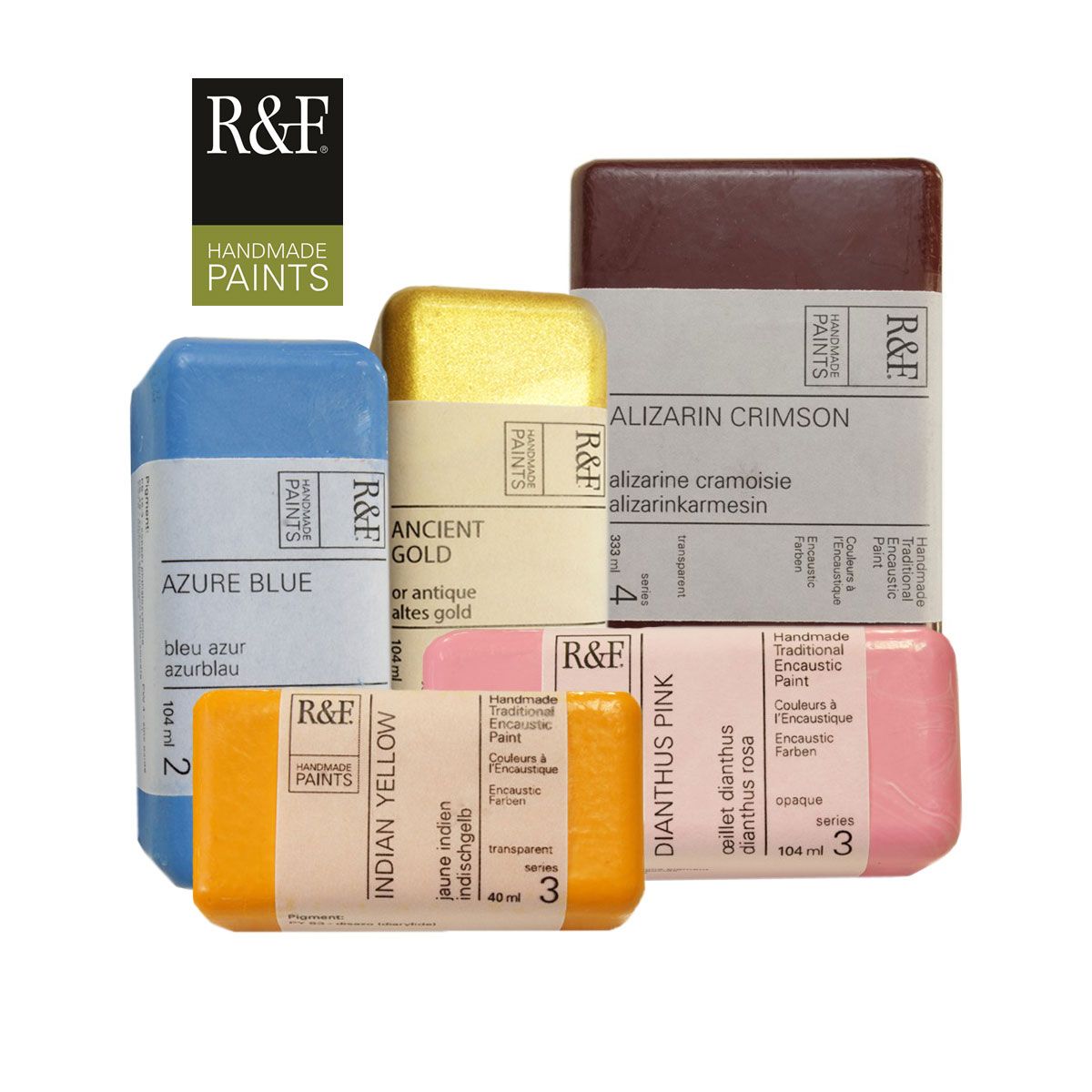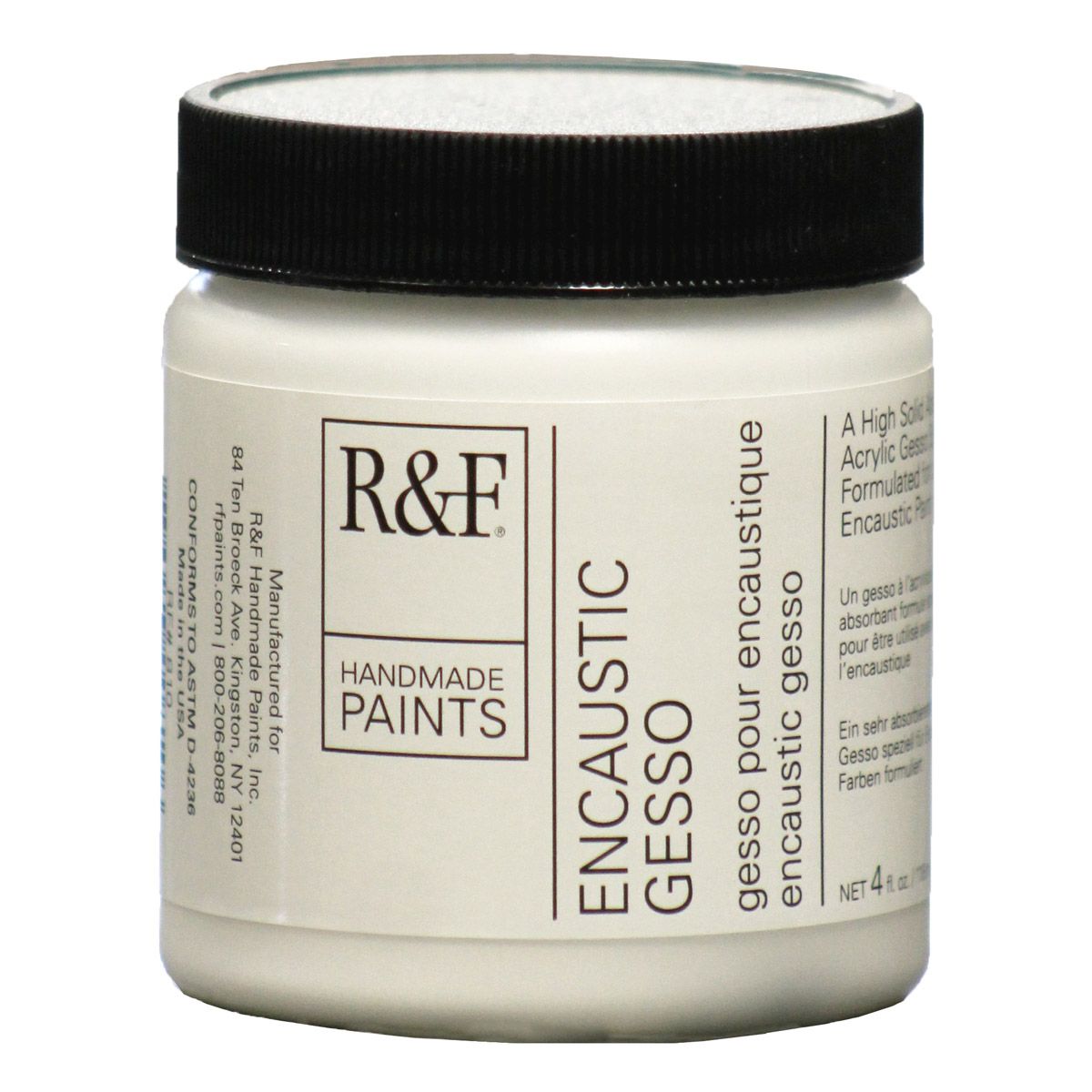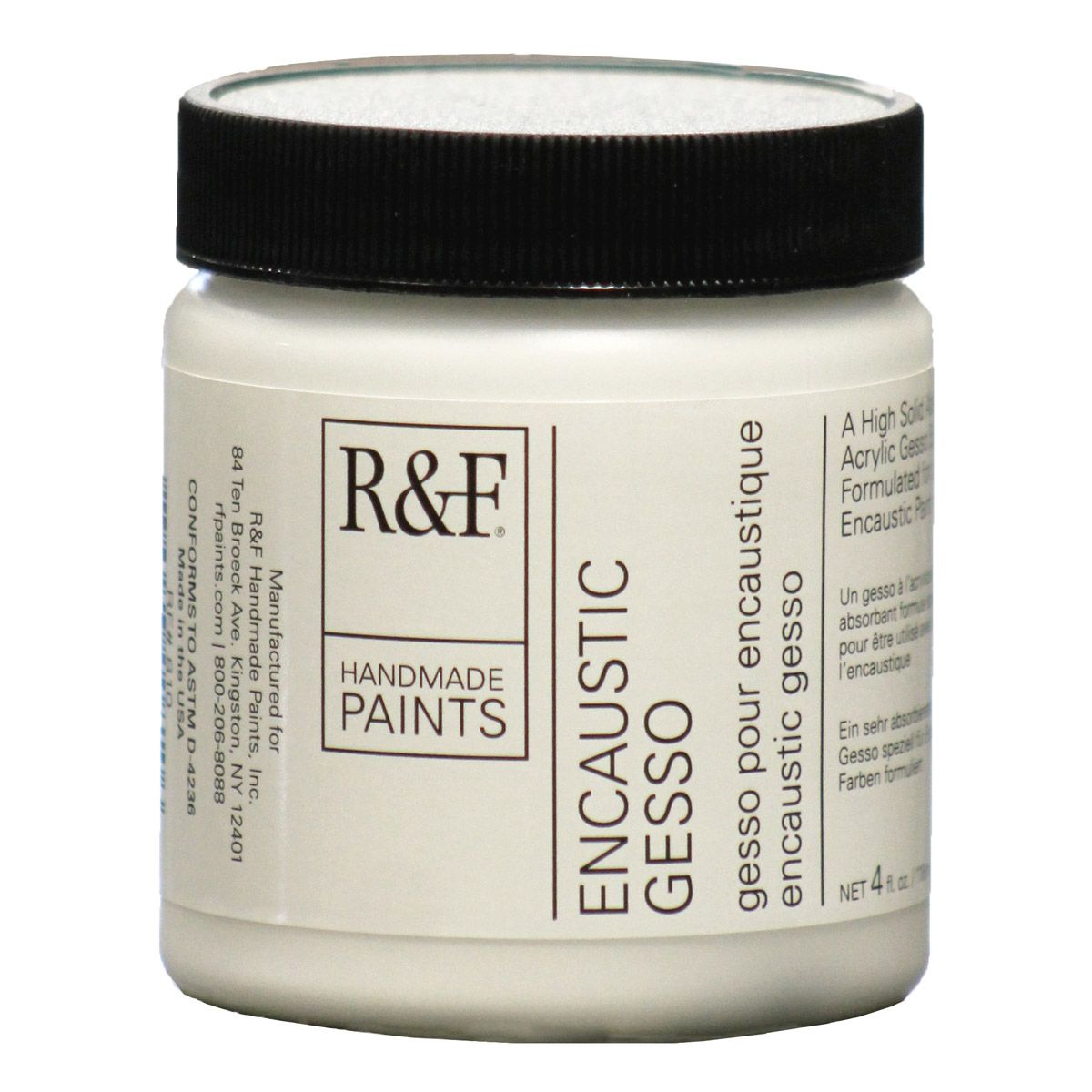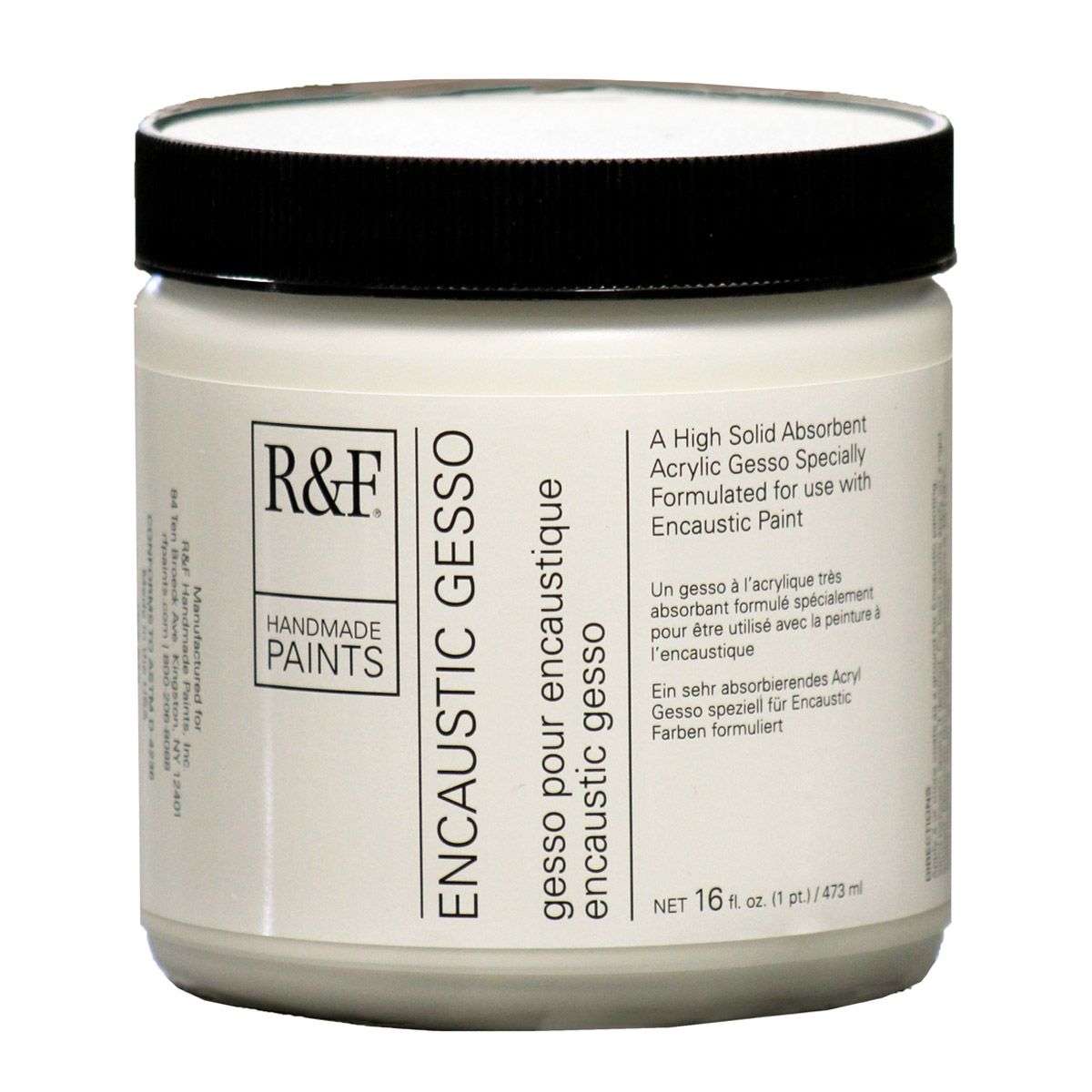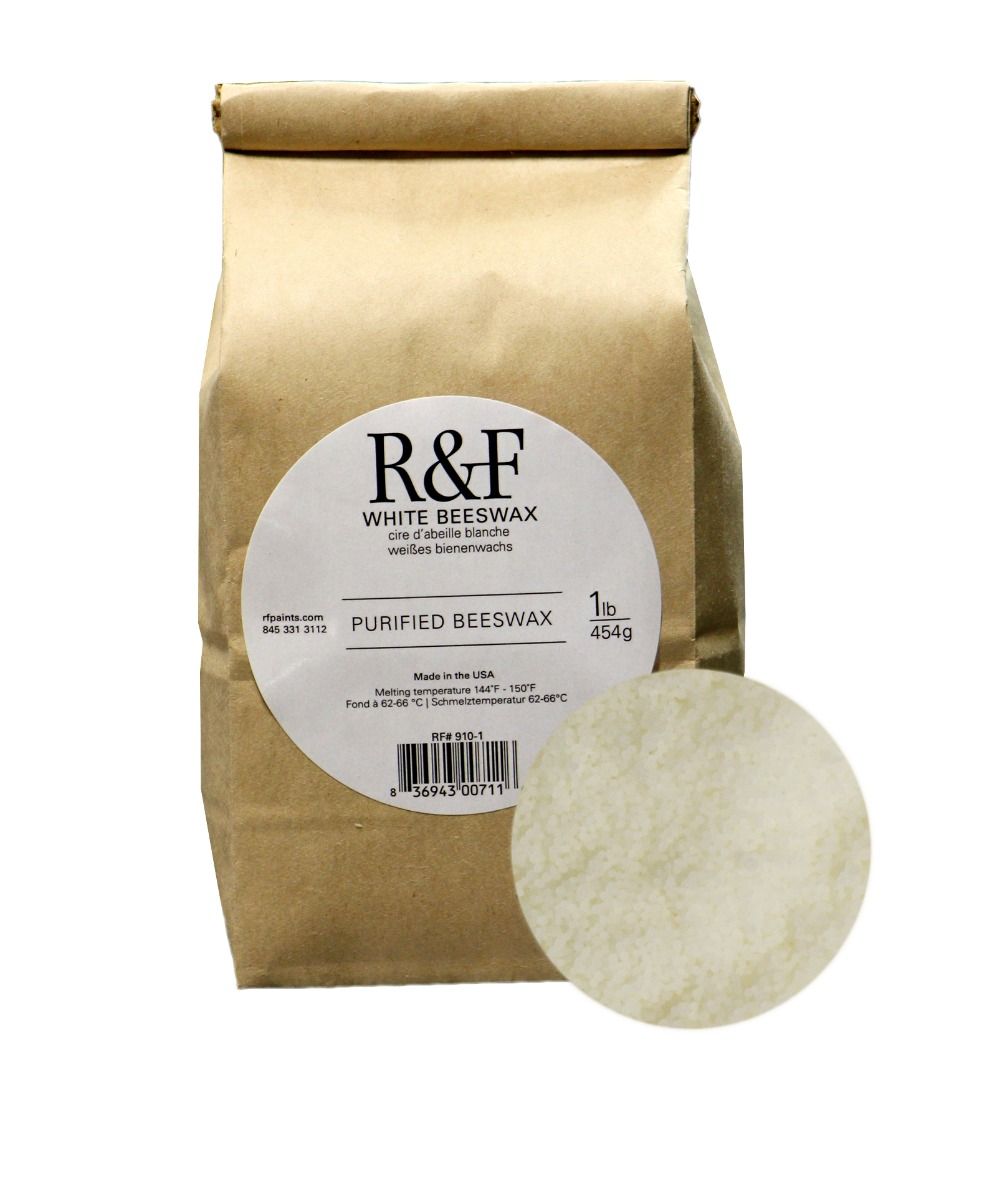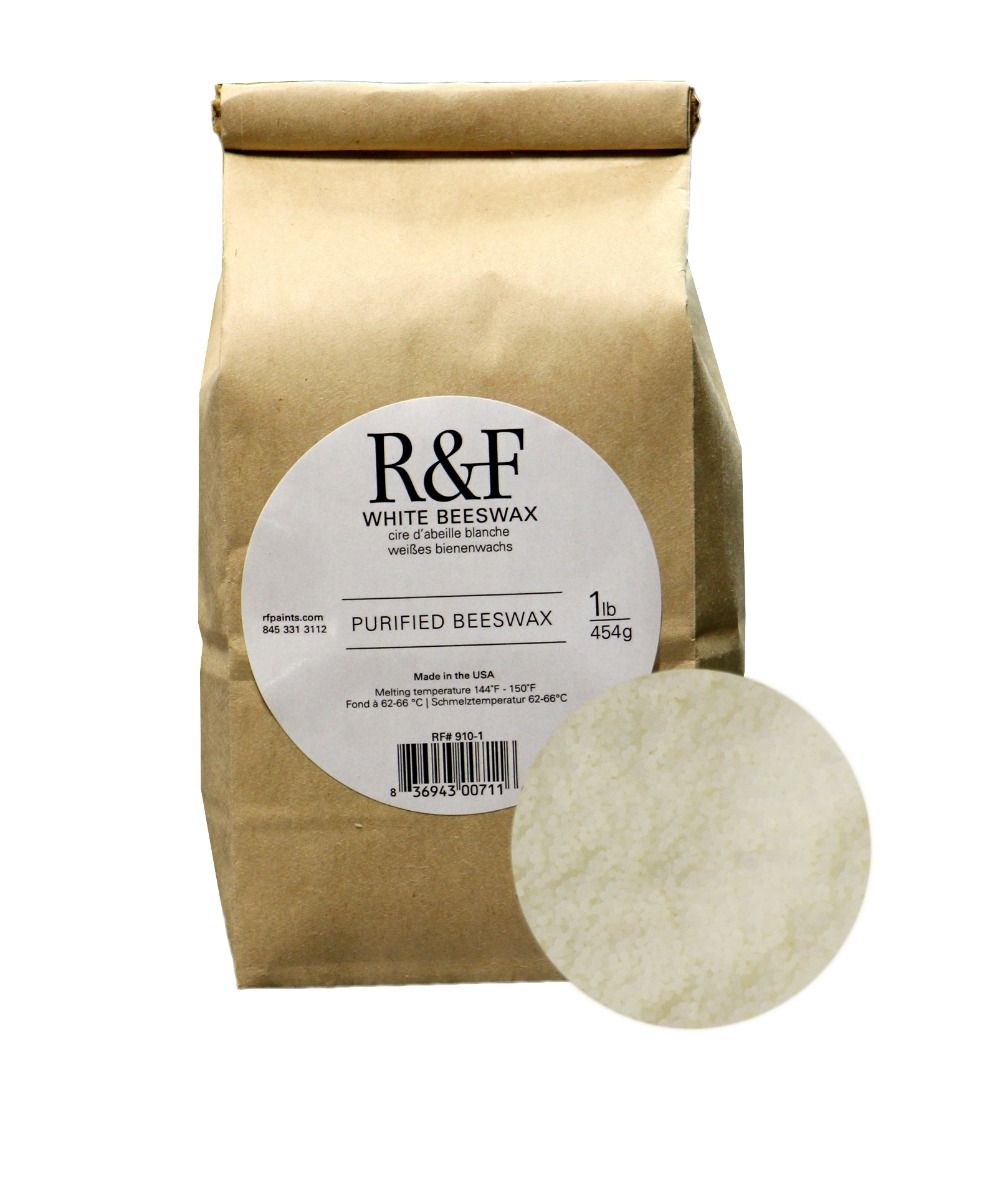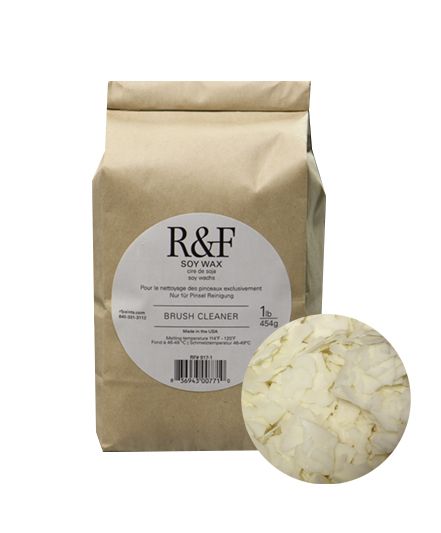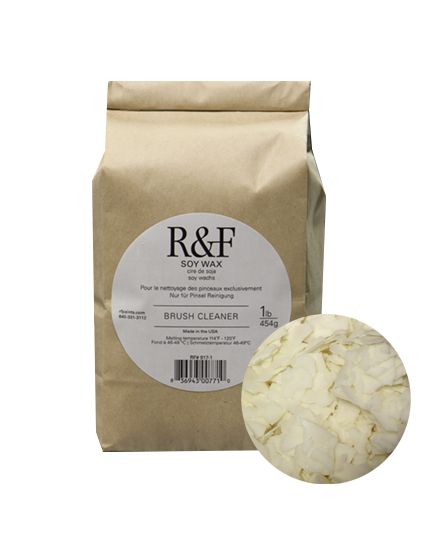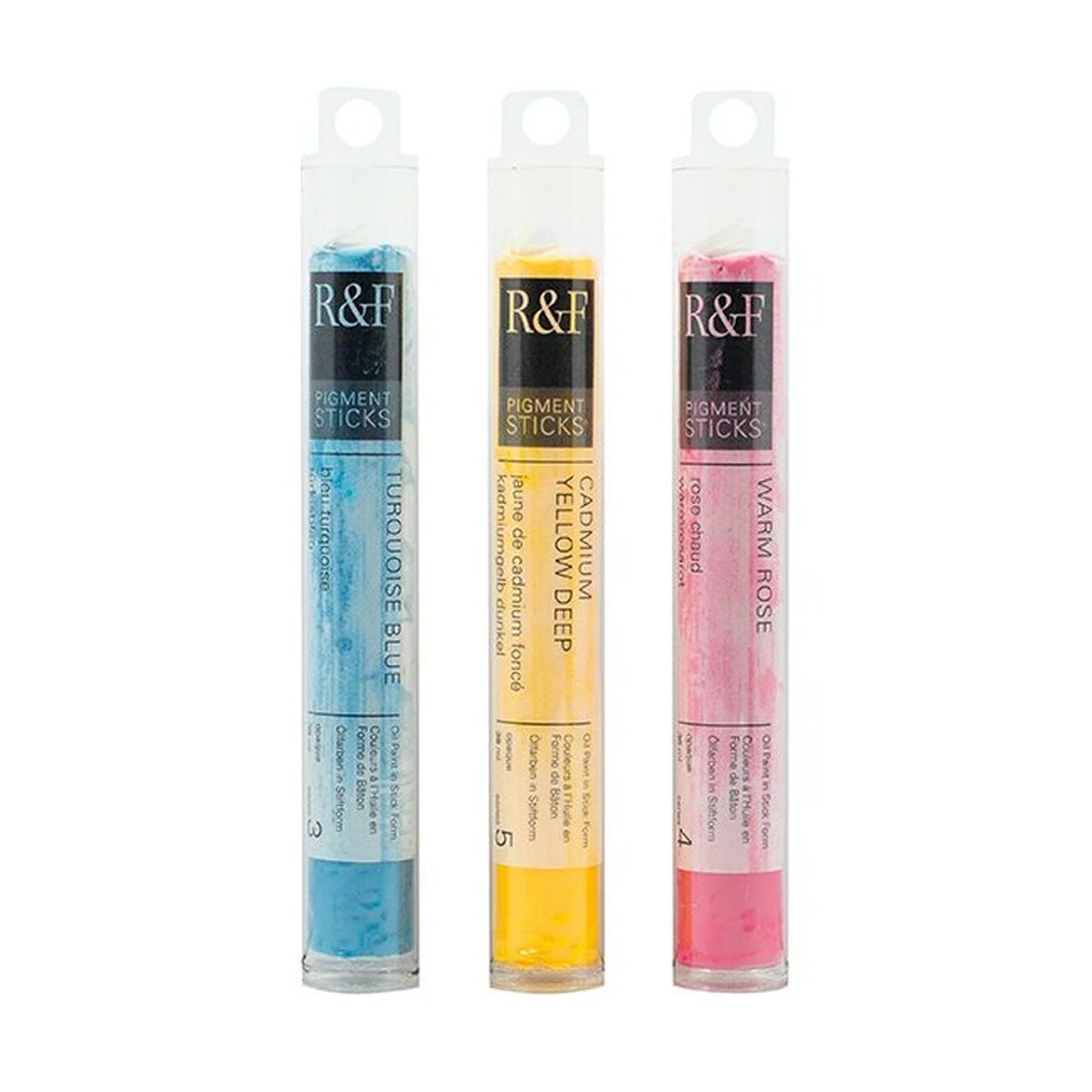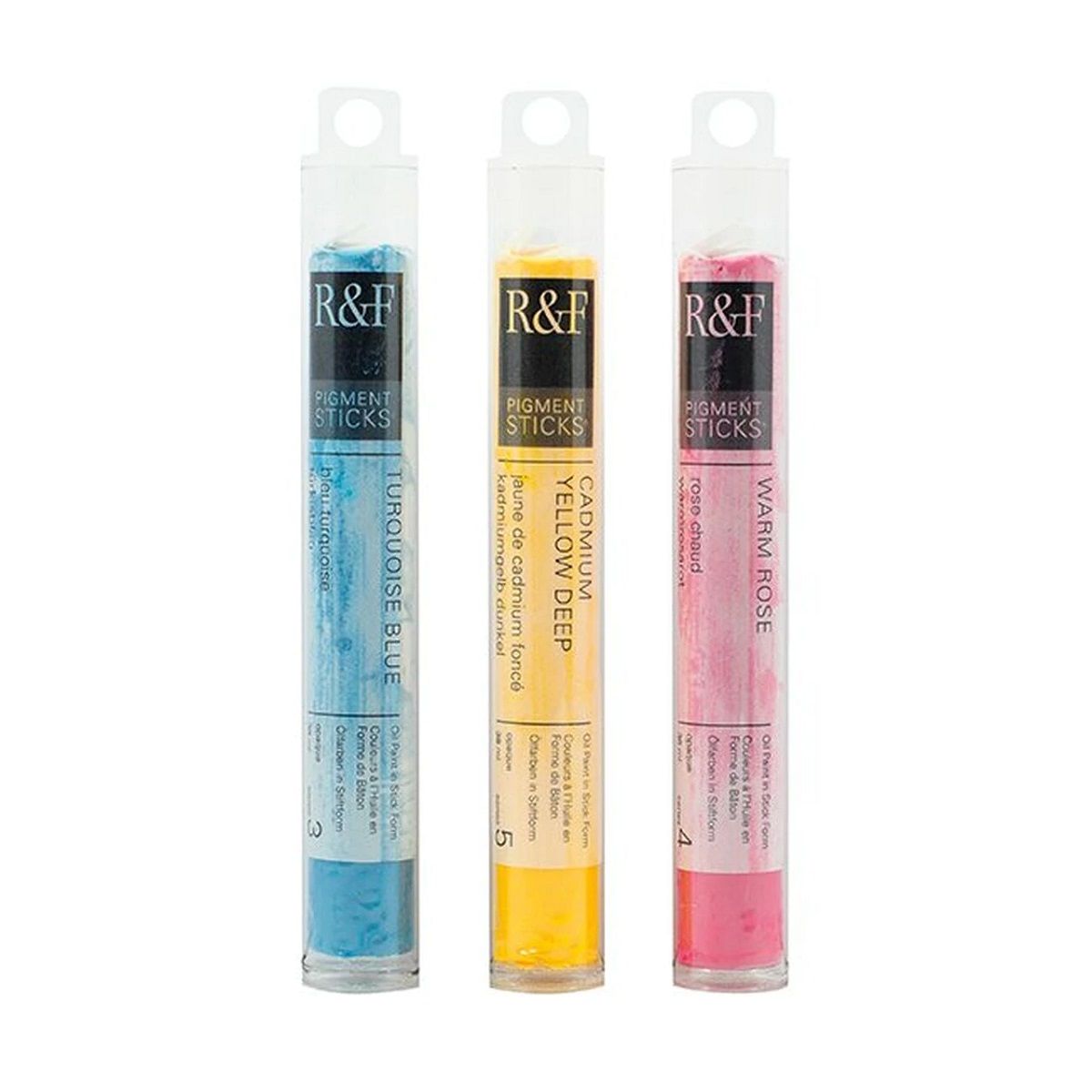R&F Oil Pigment Stick, Turkey Umber Pale 38ml (1.3oz)
R&F Pigment Stick- Turkey Umber Pale, 40 ml
Unlike Turkey Umber Greenish, its hard-edge parent, Turkey Umber Pale is a warm earthy grey whose yellowy-greenish undertone stands in contrast to the greenish-brown undertone of Turkey Umber Greenish. It is distinctly different from our Neutral Greys.
Pigment Composition: PW6-Titanium White; PW4-Zinc White; PBr7-Raw Umber; PG7-Phthalo Green
- Paint Lines: Encaustic Pigment Stick
- Opacity: Transparent
- Pigment Stick Drying Rate: Medium
- Classification: Mixed
- Chemical Composition: Raw Umber + Phthalo Green + Titanium White + Zinc White
- Safety Information: Conforms to ASTM D-4236
R&F Pigment Stick- Turkey Umber Pale, 40 ml
Unlike Turkey Umber Greenish, its hard-edge parent, Turkey Umber Pale is a warm earthy grey whose yellowy-greenish undertone stands in contrast to the greenish-brown undertone of Turkey Umber Greenish. It is distinctly different from our Neutral Greys.
Pigment Composition: PW6-Titanium White; PW4-Zinc White; PBr7-Raw Umber; PG7-Phthalo Green
- Paint Lines: Encaustic Pigment Stick
- Opacity: Transparent
- Pigment Stick Drying Rate: Medium
- Classification: Mixed
- Chemical Composition: Raw Umber + Phthalo Green + Titanium White + Zinc White
- Safety Information: Conforms to ASTM D-4236
1 Pigment Name: PW6-Titanium White
Classification: Synthetic Inorganic
Chemical Composition: Titanium dioxide
Properties
Titanium White is the most brilliant of the white pigments. It is considered an all-purpose oil colour useful in all techniques and the best all-around white. Its masstone is neither warm nor cool, placing it somewhere between Lead White and Zinc White. It is less prone to cracking and yellowing than Lead White, but it still yellows easily. Titanium White dries slowly in oil form, more slowly than Lead White but more quickly than Zinc White. It is opaque in oil and acrylic forms and semi-opaque in watercolour form. This pigment has good chemical stability, and its tinting strength is superior to both Lead White and Zinc White.
Permanence
Titanium White has excellent permanence and lightfastness.
Toxicity
Titanium dioxide is highly stable and is regarded as completely non-toxic. Animal studies do not indicate that it is absorbed biologically, even after long periods of exposure. The primary safety concern is with the inhalation of fine pigment dust particles.
History
Titanium is the ninth most abundant element in the Earth's crust. However, mineral deposits that are economical to mine are less common. Titanium dioxide was first discovered in 1821, although it could not be mass-produced until 1919. Widespread use of the pigment began in the 1940s. Since that time, it has become the most commonly used white pigment. The name comes from the Latin word Titan, the name for the elder brother of Kronos and the ancestor of the Titans, and the Greek word tito, meaning day or sun.
2 Pigment Name: PW4-Zinc White
Classification: Mixed
Chemical Composition: Zinc (II)-oxide
Properties
Zinc White is the coolest white and has a cold, clean masstone and a slightly bluish tint. It has less hiding power and is more transparent than other whites. It dries slowly and is suitable for painting wet into wet and glazing and scumbling. Zinc White is neither as opaque nor heavy as Lead White; its covering power is not as good and takes much longer to dry. However, it does not blacken when exposed to sulphur in the air as Lead White does. It is precious for making tints with other colours. Unmixed Zinc White dries to a brittle and dry paint film that may crack over the years, so it is unsuitable for frescoing. It is more transparent in acrylic than Titanium White and is the most commonly used white with gouache. Chinese White is a version of Zinc White appropriate for opaque watercolour techniques.
Permanence
Zinc White has excellent permanence and lightfastness.
Toxicity
Zinc White is moderately toxic if ingested and slightly toxic if inhaled.
History
Though historians are divided on who first isolated the element zinc, they agree it was first suggested as a white pigment in 1782. Zinc White was accepted as a watercolour in 1834 and was called Chinese White due to the popularity of oriental porcelain in Europe at the time. Ten years later, a suitable oil form was produced. By the early 20th century, it had improved to the point where it was an acceptable alternative to Flake White.
3 Pigment Name: PBr7-Raw Umber
Classification: Natural Earth
Chemical Composition: Hydrated iron oxide
Properties
Raw Umber is a cool, transparent brown ranging from yellowish-brown to greenish-brown. It has surprisingly good tinting strength and a high opacity level, mixes well with greens, and quickly dries in oil form. It has excellent colour properties and can create a variety of subtle, clear tints when mixed with white. It grays when mixed with blue and white. Raw Umber can tend towards chalkiness in dark mixes in oil form.
Permanence
Raw Umber has excellent permanence.
Toxicity
Raw Umber itself is considered non-toxic. If contaminated by manganese compounds, it may be highly toxic if inhaled and moderately toxic if ingested.
History
This pigment comes from the Latin word umbra, meaning shadow or shade. Its full name is listed as terra dombra, meaning earth of shadow/shade, due to its original extraction from the area of Umbria, Italy. It has been used as a pigment since prehistoric times. Currently, the finest umber comes from Cyprus.
4 Pigment Name: PG7-Phthalo Green
Classification: Synthetic Organic
Chemical Composition: Polychlorinated copper (II) phthalocyanine
Properties
Phthalo Green is a transparent, cool, bright, high-intensity colour used in oil and acrylics. It comes from a Phthalocyanine Blue pigment where most hydrogen atoms have been replaced with chlorine, forming highly stable molecules. It has similar pigment properties and permanence to Phthalo Blue. It is slow drying and excellent base colour for mixing a range of bright greens. Phthalo Green is considered an excellent alternative to Viridian because it is intense and mixes well, and can be used to emphasize mineral colours in various tints. However, its tinting strength is very high, so it can overpower other colours. This pigment most closely resembles the discontinued and toxic Verdigris.
Permanence
Phthalo Greens are completely lightfast and resistant to alkali, acids, solvents, heat, and ultraviolet radiation. Due to their stability, they are currently used in inks, coatings, and many plastics and are considered a standard pigment in printing ink and the packaging industry.
Toxicity
Phthalo Green has no significant hazards, but it contained PCBs (polychlorinated biphenyls) until 1982.
History
This bright blue-green was developed in 1935 and has been used since 1938.
| Size | 38 ml |
|---|---|
| Brand | R&F Encaustic Handmade Paints |
| Country of Manufacture | United States |
| Type of Store Credit value | Select |
| Country of Origin | 836943005969 |










